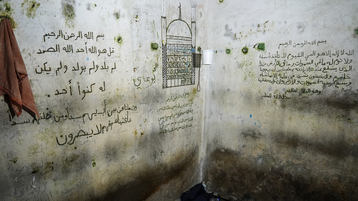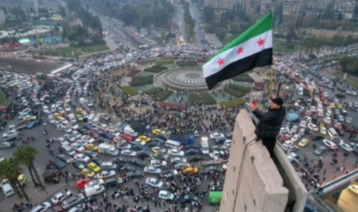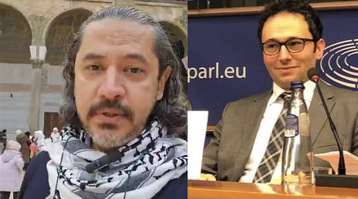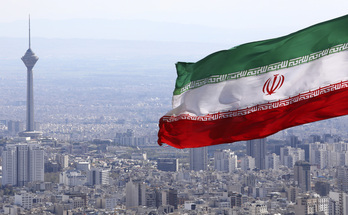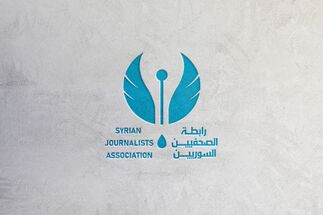-
Crisis in Iran: Around 800,000 Students Absent as the New School Year Begins

*By Saeed Abad*
As the new school year commences in Iran, alarming statistics reveal that 790,000 students have not returned to classrooms, highlighting a burgeoning crisis in the country's education system. According to Mohammad Alavi Tabar, Deputy Director of the Educational Research and Planning Organization, 890,000 students have not yet requested their textbooks, and among this group, 790,000 have not registered in schools. Even among those who have enrolled, the fate of 100,000 students remains uncertain, as they have not yet applied for their textbooks.
In a country where over 16 million students are expected to attend school this year, this widespread absence indicates a growing challenge. Approximately 9.2 million children are enrolled in primary schools, 3.8 million in secondary schools, and 2.9 million in high schools. However, structural issues within Iran's educational system, including unequal access to resources, an expanding gap between public and private schools, and a severe shortage of teachers, contribute to rising dropout rates.
**Rural and Disadvantaged Schools Face Stark Challenges**
In recent weeks, images have emerged depicting the dire conditions of schools in rural and disadvantaged areas. Impassable roads endanger students' lives, and many schools lack even the most basic educational facilities, raising questions about academic equity in Iran. The challenges are particularly severe in provinces like Sistan and Baluchestan, where students face disproportionately low success rates due to limited educational opportunities.
A report released in May 2023 revealed that during the 2021-2022 school year, nearly 11% of primary school students failed to complete their studies. The success rate in Sistan and Baluchestan was the lowest, with only 75% of students finishing their education. Similarly, 12% of secondary school students in the region did not pass their final exams, marking the lowest rate in the country.
**Teacher Shortages and Deteriorating Conditions in Public Schools**
One significant factor contributing to the education crisis is the shortage of teachers at all educational levels. Overcrowded classrooms are the norm, especially in deprived areas, forcing the Ministry of Education to fill gaps by rehiring retired teachers and recruiting those with little motivation to teach. The ministry's inability to offer competitive salaries has led to union protests, further diminishing teachers' morale.
Public school students are increasingly deprived of essential educational resources, while nonprofit private schools impose high tuition fees and offer special privileges to students from wealthier families. This stark disparity in access to quality education exacerbates educational inequality, as private schools only accept those who can afford exorbitant costs and pass rigorous entrance exams.
**Economic and Political Pressures on Teachers and Students**
The difficulties faced by the education system in Iran are compounded by increasing political pressures on teachers and educators. Over the past decade, especially in the last two years, cultural and educational communities in Iran have faced heightened repression by the regime. Many teachers have been dismissed or summoned for their union activities, and some school principals and teachers have been removed from their positions. This political pressure, alongside low salaries and lack of resources, has created a challenging environment for both teachers and students.
Additionally, the regime's ideological influence on the curriculum has undermined the quality of education. Textbooks are frequently revised to promote state ideology, making it difficult for teachers to keep up with changes and diminishing their mastery of the material. This manipulation of curricula has led to a significant decline in academic performance nationwide.
**Educational Decline Reflected in Student Performance**
The effects of these challenges are evident in the declining performance of Iranian students. Ali Reza Monadi, the former head of the Education and Research Committee in Parliament, disclosed that the average GPA of Iranian students has dropped to 11.5. Furthermore, the percentage of students from public schools who passed the national university entrance exam has decreased. According to the latest data from the 2024 entrance exam, only seven percent of top-performing students came from public schools, with only two of the top 30 students attending public institutions.
The decline in academic performance among Iranian students, combined with high dropout rates and glaring inequalities in access to educational resources, underscores the urgent need for comprehensive reform in Iran's education system. Without addressing these systemic issues, millions of students will continue to lag behind, and the gap between public and private education will widen.
*Saïd Abad is a member of the Foreign Affairs Committee of the National Council of Resistance of Iran; a human rights activist, and an expert on Iran and the Middle East.*
Tags
You May Also Like
Popular Posts
Caricature
BENEFIT AGM approves 10%...
- March 27, 2025
BENEFIT, the Kingdom’s innovator and leading company in Fintech and electronic financial transactions service, held its Annual General Meeting (AGM) at the company’s headquarters in the Seef District.
During the meeting, shareholders approved all items listed on the agenda, including the ratification of the minutes of the previous AGM held on 26 March 2024. The session reviewed and approved the Board’s Annual Report on the company’s activities and financial performance for the fiscal year ended 31 December 2024, and the shareholders expressed their satisfaction with the company’s operational and financial results during the reporting period.
The meeting also reviewed the Independent External Auditor’s Report on the company’s consolidated financial statements for the year ended 31 December 2024. Subsequently, the shareholders approved the audited financial statements for the fiscal year. Based on the Board’s recommendation, the shareholders approved the distribution of a cash dividend equivalent to 10% of the paid-up share capital.
Furthermore, the shareholders endorsed the allocation of a total amount of BD 172,500 as remuneration to the members of the Board for the year ended 31 December 2024, subject to prior clearance by related authorities.
The extension of the current composition of the Board was approved, which includes ten members and one CBB observer, for a further six-month term, expiring in September 2025, pending no objection from the CBB.
The meeting reviewed and approved the Corporate Governance Report for 2024, which affirmed the company’s full compliance with the corporate governance directives issued by the CBB and other applicable regulatory frameworks. The AGM absolved the Board Members of liability for any of their actions during the year ending on 31st December 2024, in accordance with the Commercial Companies Law.
In alignment with regulatory requirements, the session approved the reappointment of Ernst & Young (EY) as the company’s External Auditors for the fiscal year 2025, covering both the parent company and its subsidiaries—Sinnad and Bahrain FinTech Bay. The Board was authorised to determine the external auditors’ professional fees, subject to approval from the CBB, and the meeting concluded with a discussion of any additional issues as per Article (207) of the Commercial Companies Law.
Speaking on the company’s performance, Mr. Mohamed Al Bastaki, Chairman BENEFIT , stated: “In terms of the financial results for 2024, I am pleased to say that the year gone by has also been proved to be a success in delivering tangible results. Growth rate for 2024 was 19 per cent. Revenue for the year was BD 17 M (US$ 45.3 Million) and net profit was 2 Million ($ 5.3 Million).
Mr. Al Bastaki also announced that the Board had formally adopted a new three-year strategic roadmap to commence in 2025. The strategy encompasses a phased international expansion, optimisation of internal operations, enhanced revenue diversification, long-term sustainability initiatives, and the advancement of innovation and digital transformation initiatives across all service lines.
“I extend my sincere appreciation to the CBB for its continued support of BENEFIT and its pivotal role in fostering a stable and progressive regulatory environment for the Kingdom’s banking and financial sector—an environment that has significantly reinforced Bahrain’s standing as a leading financial hub in the region,” said Mr. Al Bastaki. “I would also like to thank our partner banks and valued customers for their trust, and our shareholders for their ongoing encouragement. The achievements of 2024 set a strong precedent, and I am confident they will serve as a foundation for yet another successful and impactful year ahead.”
Chief Executive of BENEFIT; Mr. Abdulwahed AlJanahi commented, “The year 2024 represented another pivotal chapter in BENEFIT ’s evolution. We achieved substantial progress in advancing our digital strategy across multiple sectors, while reinforcing our long-term commitment to the development of Bahrain’s financial services and payments landscape. Throughout the year, we remained firmly aligned with our objective of delivering measurable value to our shareholders, strategic partners, and customers. At the same time, we continued to play an active role in enabling Bahrain’s digital economy by introducing innovative solutions and service enhancements that directly address market needs and future opportunities.”
Mr. AlJanahi affirmed that BENEFIT has successfully developed a robust and well-integrated payment network that connects individuals and businesses across Bahrain, accelerating the adoption of emerging technologies in the banking and financial services sector and reinforcing Bahrain’s position as a growing fintech hub, and added, “Our achievements of the past year reflect a long-term vision to establish a resilient electronic payment infrastructure that supports the Kingdom’s digital economy. Key developments in 2024 included the implementation of central authentication for open banking via BENEFIT Pay”
Mr. AlJanahi concluded by thanking the Board for its strategic direction, the company’s staff for their continued dedication, and the Central Bank of Bahrain, member banks, and shareholders for their valuable partnership and confidence in the company’s long-term vision.
opinion
Report
ads
Newsletter
Subscribe to our mailing list to get the new updates!



